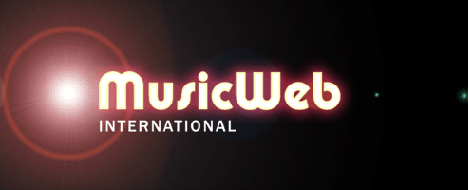Who seems the more likely prospect for a complete new
recording of Ravel’s piano music – a proven Debussy pianist like Zimerman,
Thibaudet or Kocsis; or a Bach specialist like Hewitt, Perahia or Schiff?
An interesting question indeed!
Having taught in Higher Education for thirty years,
I’ve always been intrigued by the ‘convenience couplings’ of composers
favoured by casual music-lovers and amateur musicologists; and I’ve
always been keen to ensure that students are better able to distinguish
between Bach and Handel, Mozart and Haydn, Bruckner and Mahler, Debussy
and Ravel, and so on. In truth, for all that we like to think of Debussy
and Ravel as jointly representative of the ‘French School’ (whatever
that is) at the turn of the last century, they are utterly different
in their stylistic leanings, in temperament, in their interests and
influences, and in terms of chronology.
It doesn’t actually follow that, de facto, a
good Debussy pianist makes a good Ravel pianist. Of the works included
on the two marvellous CDs under consideration here, Jeux d’eau, Gaspard
de la nuit and Miroirs may be said to be loosely ‘impressionistic’,
and so comparable – in terms of harmonic and textural colour, and the
evocation of non-musical imagery – to the Debussy of the two books of
Préludes. These pieces demand a vast range of pianistic
colour, a fantastic imagination, and a good degree of expressive freedom.
There is no question that Angela Hewitt possesses all of these qualities,
but it has to be admitted that Thibaudet, in the rival Decca recording,
paints even richer colours and evokes even more atmosphere, to say nothing
of the more theatrical scale of his playing.
It’s important to follow these comments through by
suggesting that Ms Hewitt’s more careful, more intimate voice may not
necessarily be a disadvantage. She brings a wonderfully subtle delicacy
to the flashes of light and passing shadows of Jeux d’eau. In
Oiseaux tristes (from Miroirs), the forest is unmistakably
dense and the summer unquestionably hot; but neither overwhelms you,
so tender is her playing. And Le gibet (the central movement
of Gaspard de la nuit) is as spooky as any, and beautifully ‘orchestrated’.
Comparing Hewitt’s performance of the outer movements
of Gaspard de la nuit with ‘big’ players like Argerich and Pogorelich
is interesting. Hewitt’s virtuosity is not in question, but it is contained:
with Argerich and Pogorelich, it is more overtly evidenced in much wider-ranging
dynamic detail, both horizontally (i.e. from bar to bar, or from page
to page) and vertically, i.e. between voices, or between layers in the
texture. So the opening bars of Ondine is, to Pogorelich, like
an orchestra of murmuring and muted strings accompanying a plaintive
cor anglais; whereas Hewitt plays the two musical planes like different
registers of a harpsichord, both of them admirably clear, but neither
more prominent than the other.
The neo-baroque and neo-classical pieces in this collection
(notably Pavane pour une infante défunte, Sonatine and
Le Tombeau de Couperin) are eminently suited to a player such
as Angela Hewitt, who has shown exemplary artistic judgment and control
in the 18th century keyboard repertory: witness her award-winning recordings
on the Hyperion label of the Bach Partitas, the two books of
the Well-Tempered Clavier and the Goldberg Variations. The
restrained gestures, the delicate melodic ornaments, the harpsichord-like
figurations, the subtle dance rhythms, the finely-balanced and beautifully-engineered
structures: Hewitt’s attention to such exquisite details is perfect.
Witness the buzzing semiquavers and grace-notes of the Prélude
to Le Tombeau de Couperin, the crystalline counterpoint of the
following Fugue, or the precious jewel-like Menuet, with
its irresistible talking phrases!
As we have come to expect in Hyperion releases, the
CD booklet is exemplary – scholarly and comprehensive, indeed a joy
to own. And the recording is outstandingly truthful. I would not want
anyone who is remotely tempted by this exciting issue to hold back on
account of one or two of my comments: this is supremely musical playing.
Just be aware that Thibaudet’s ‘orchestra’ (on Decca 433 515-2) plays
with more abandon, its various departmental colours more extrovertly
evident. But, as I’ve already said, that doesn’t necessarily make it
better!
Peter J Lawson


